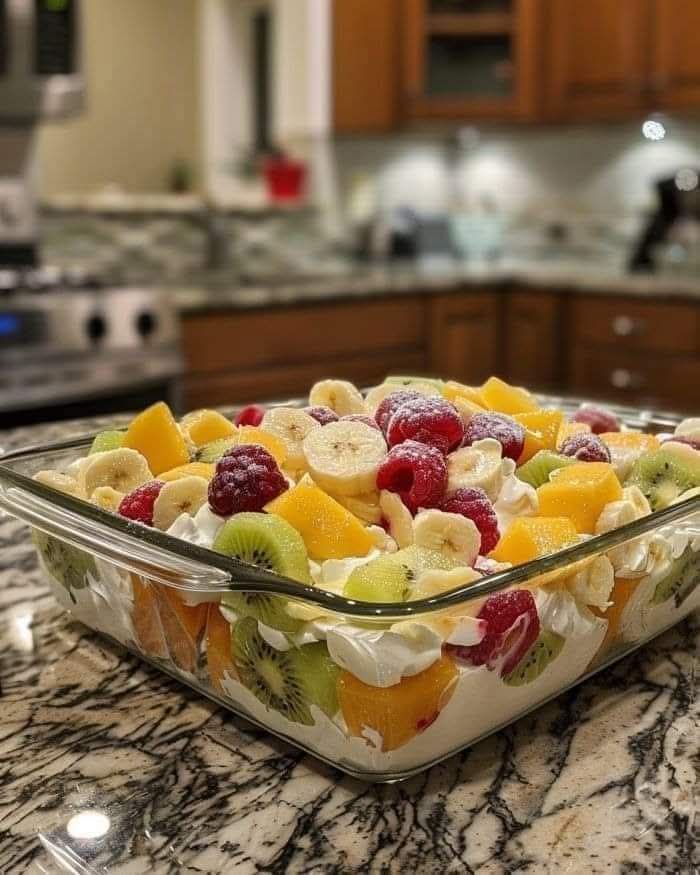ADVERTISEMENT
### **Instructions:**
Making this dish requires both patience and love. My nana always said that cooking was about feeling the dish and understanding when it was ready. But after much trial and error, here’s the recipe that I’ve finally been able to recreate:
1. **Step 1: Preparing the Base**
Begin by [describe the first step of the recipe]. This step is crucial for laying the foundation of flavor. As my nana used to say, “Get this part right, and the rest will follow.”
2. **Step 2: Combining the Ingredients**
[Explain the next step in detail]. At this point, the ingredients will start to come together, and you’ll notice the flavors melding in a way that feels familiar. This is the magic of the dish.
3. **Step 3: Cooking/Simmering**
[Provide the instructions for cooking or simmering]. My nana was always meticulous about timing. She would always tell us to watch for those little signs — the way the sauce thickens, the aroma that fills the kitchen — as the dish neared completion.
4. **Step 4: Finishing Touches**
[Detail the final steps of the recipe, including any garnishes or final preparations]. This is where you add that final flourish that ties everything together. It’s often these last touches that turn a good dish into a great one.
5. **Step 5: Serving and Enjoying**
Once the dish is finished, serve it with pride. My nana always made sure that when we sat down to eat, we appreciated not just the food, but the time spent together.
### **Tips for Perfecting the Dish**
If you’re attempting to recreate this dish for the first time, here are some tips I’ve learned from both my failures and successes:
– **Don’t rush the process**: The best dishes are often the result of time and patience. My nana used to say that cooking is an art, not a race.
– **Trust your instincts**: As much as following the recipe is important, the real magic happens when you trust your own senses — taste, smell, and sight. Don’t be afraid to adjust the seasoning or add a little extra flavor if needed.
– **Use high-quality ingredients**: The better the ingredients, the better the final dish. My nana always emphasized the importance of using fresh, high-quality ingredients.
– **Don’t forget the love**: Cooking was never a chore for my nana. It was a way to express love and care for the people around her. Always cook with a generous heart.
## **Why Family Recipes Matter**
Family recipes are more than just food — they represent the continuity of traditions and the bonds that keep us connected. For many of us, food is the foundation of family gatherings. It’s what brings us together after a long week, and it’s what we remember when we look back on our childhood. Whether it’s a dish that has been passed down for generations or a recipe that has evolved over time, these meals are a way to hold on to the past while creating new memories in the present.
In today’s fast-paced world, it’s easy to forget the value of these traditions. We often find ourselves relying on convenience foods or trendy new recipes, neglecting the dishes that have been passed down through generations. But when we take the time to preserve these family recipes, we’re not just keeping the tradition alive — we’re also ensuring that future generations can experience the same flavors, the same love, and the same memories that we cherished as children.
## **Passing Down Recipes to Future Generations**
Now that I’ve rediscovered my nana’s recipe and written it down, I feel a deep sense of accomplishment. But more importantly, I feel a sense of connection to the generations before me. This recipe is no longer just a forgotten memory. It’s a tangible piece of my family’s legacy that I can share with my own children and grandchildren.
Preserving family recipes is something that can be done in many ways. You can write them down in a recipe book, pass them on verbally, or even record a video of yourself making the dish so future generations can see how it’s done. Whatever method you choose, the key is to ensure that these recipes are not lost to time.
## **Conclusion: A Timeless Tradition**
In the end, the process of rediscovering my nana’s recipe was about more than just the dish itself. It was about reconnecting with my family’s history, embracing the traditions that shaped me, and honoring the love and care that my nana poured into her cooking every year.
If you have a family recipe that you’ve forgotten to write down, I encourage you to take the time to preserve it. Whether it’s for yourself, your children, or future generations, these recipes are a testament to the love and memories we hold dear. So, the next time you sit down to enjoy a meal that’s been passed down through the years, take a moment to appreciate the generations of family, tradition, and love that have brought it to your table.
